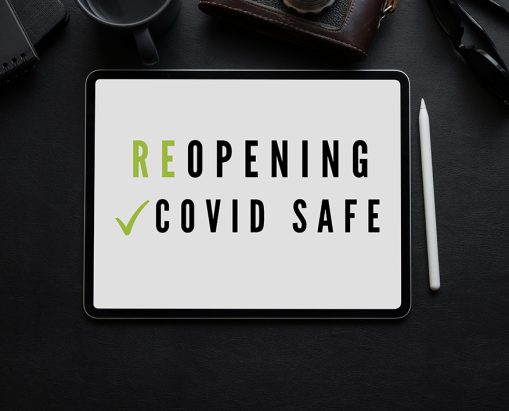
As we informed you in our May 28, 2020 alert, Cal/OSHA requires that employers update their Injury and Illness Prevention Program (IIPP) to include infection control measures to protect against the spread of COVID-19. Cal/OSHA also recommends that employers implement the Centers for Disease Control (CDC) Guidance for Employers.
The CDC’s Interim Guidance for Businesses and Employers contains recommendations applicable to all employers. In addition, it provides guidance for specific types of businesses. Today’s alert discusses the CDC’s Employer Information for Office Buildings.
An employer’s duties will depend, in part, on whether the employer controls certain aspects of the office building’s systems (such as the HVAC) and certain high-traffic or shared spaces (such as restrooms, lobbies, and kitchens). When the employer has control of these areas, it is responsible for implementing the required safety measures. When the employer does not have control of them, the employer should confirm with the building owner or manager that the required safety measures have been implemented.
In addition, there are additional requirements for employers who are re-opening offices that have been completely closed for several weeks, as opposed to offices that have been occupied continuously by minimal staff. When an office has been completely unused, you must check for hazards associated with prolonged shutdown, such as mold growth, rodents or pests, stagnant water systems, and HVAC inspections.
Employers should conduct a hazard assessment to determine the workplace hazards that increase the risk of COVID-19 transmission. The CDC hazard controls are grouped into two categories: engineering and administrative, as discussed below. In addition, employers should communicate with all staff and all contractors working in the office and should provide training to all employees. (We discussed Cal/OSHA training requirements in our June 2, 2020 alert.)
Engineering Controls include:
- Modifying seats, workstations, and furniture in order to maintain six feet of distance. For example, install transparent shields and create space between seats in reception areas.
- Separating employees to maintain six feet of distance. For example, use tape marks on the floor and directional signs.
- Eliminating the use of shared items such as coffee pots and water coolers. Replace with single-use items.
- Improving ventilation in the building. For example, increase the percentage of outdoor air and increase air filtration. Consider running the air system even when the building is unoccupied.
- Ensuring restroom exhaust fans operate at full capacity.
Administrative Controls include:
- Conducting daily symptom checks of employees.
- Having employees wear cloth face coverings unless they have a health issue precluding it.
- Reducing the density of employees by staggering shifts and break times, or by scheduling employees for in-office work in “pods.”
- Minimizing the number of clients or visitors and requesting that they wear face coverings and maintain social distancing.
- Posting signs and posters with reminders on social distancing, hand washing, and wearing face coverings.
- Limiting the use and occupancy of elevators.
Taking the recommended actions will help to fulfill your responsibility to provide your employees with a safe and healthy workplace. It will also assist you in reducing your exposure to workers’ compensation claims and Cal/OSHA citations.
Copyright © 2020, Murphy Austin Adams Schoenfeld LLP. All rights reserved. Please be assured that we make every effort to make certain that the information contained in this alert is current at the time this email was delivered. Because laws and legislation are constantly changing, please contact us if you are unsure whether this material is still current. Nothing contained herein should be construed as legal advice or a legal opinion on any specific facts or circumstances. The contents are intended to be for general information purposes only. We assume no liability in connection with the use of the information contained in this article. Given the rapidly evolving nature of legal and governmental responses to the COVID-19 pandemic, unfolding events likely will supersede many of the issues discussed in these updates. We encourage you to contact our lawyers directly for the most current information and counsel regarding legal and governmental responses to the COVID-19 pandemic. Please contact us to answer any questions you may have.


